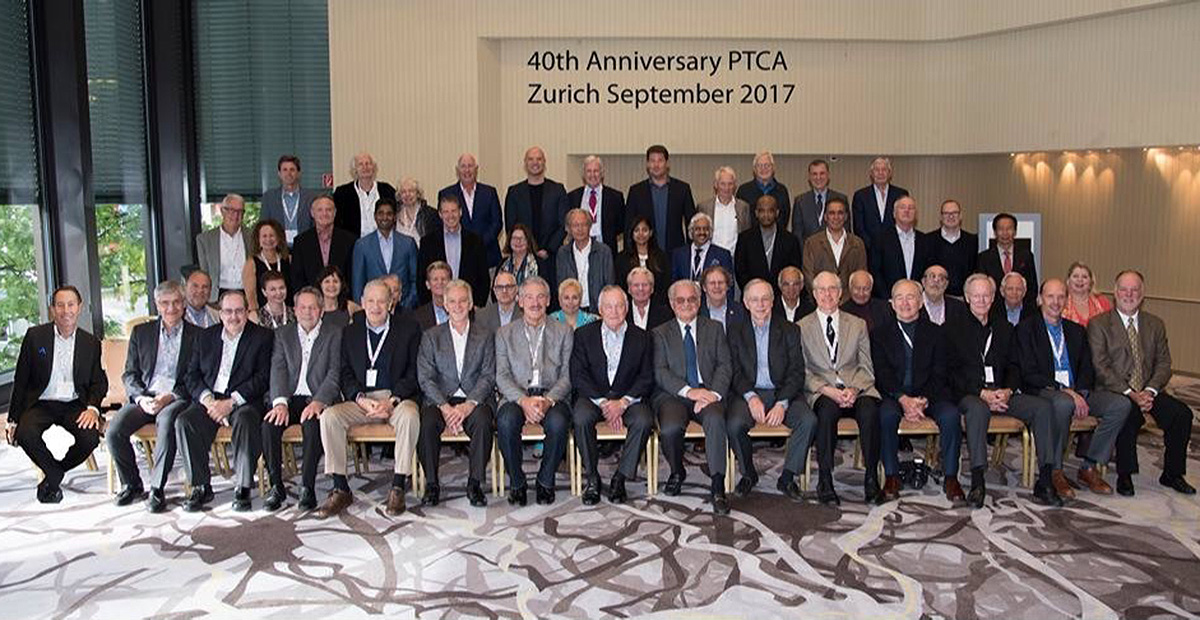The International Andreas Gruentzig Society 40th Anniversary of PCI Meeting in Switzerland
This article was authored by George W. Vetrovec, MD, MACC.
The day of Sept. 16, 1977, is recalled by pioneering interventionalists as the day coronary revascularization changed for patients and the yet-to-evolve interventional cardiologists.
This past September, over 100 colleagues gathered in Zurich, Switzerland, as part of the biennial International Andreas Gruentzig Society (IAGS). The IAGS was created in 1990 by Gary Ruben, MD, who foresaw an opportunity to create an important, albeit smaller, society to foster the continued evolution and innovation of interventional cardiovascular therapy, incorporating the vision of Andreas Gruentzig, MD. Combining experts from multiple clinical and basic science fields with similar interests and goals, the IAGS has played a continuing role in fostering innovation. The highlight of the IAGS is the “think tank” format of the biannual meeting, a multidisciplinary integration of clinical and industry experts to seek solutions to continuing cardiovascular challenges.
The 2017 meeting was particularly special because it marked 40 years since the first procedure was performed in Zurich. The meeting included a dinner honoring the legend of Gruentzig. Attendees at the dinner included Gruentzig family members and early interventionalists. In attendance was also Dolf Bachman, a patient who underwent the first percutaneous transluminal coronary angioplasty procedure at the age of 38. Bernhard Meier, MD, FACC, takes credit for finding the “right patient,” and much credit was also given to Maria Schlumpt for her dedication to early program management.
The session’s focus was on what is known and what issues remain to be identified or resolved. For example, there was much discussion about optimal dissemination of current outcome data, as well as focus on improving appropriate referral of patients who can benefit from technology such as patent foramen ovale closure, hemodynamic support and more aggressive, invasive treatment of acute stroke.
 Dolf Bachman (center) with George Vetrovec, MD, MACC, and Seth Bilazarian, MD, FACC, at the Gala Dinner.
Dolf Bachman (center) with George Vetrovec, MD, MACC, and Seth Bilazarian, MD, FACC, at the Gala Dinner.Click to enlarge.
Other specific topics included better management of cardiogenic shock with William O’Neill, MD, FACC, discussing his new strategy to initiate mechanical circulatory support prior to revascularization in acute myocardial infarction with shock. Further discussions revolved around valves, including transcatheter aortic valve replacement in low gradient and low risk patients and the evolution of mitral and tricuspid treatment, and what is needed to advance these therapies. Coronary topics focused on optimal treatment of calcified vessels, left main bifurcation, the role of complete revascularization in STEMI and evolving applications for robotic percutaneous coronary intervention. These examples are just a few, as there was much more, always focused on current limits but future potential for improvement of technology and procedures.
Throughout the discussions, the importance of disseminating benefits of interventional procedures to the practice of medicine was a recurrent focus. One consequence is that many patients fail to receive the benefits of new techniques because of a knowledge gap among practitioners. This gap is a major challenge for patients and interventional cardiology; how to disseminate honest and established information treatment opportunities for a larger population of patients.
Overarching the meeting was not just the scientific science, but also the continued rededication to the “spirit of Gruentzig.” That spirit espouses the excitement of innovation, modulated by scientific rigor and quality standards. A goal of the IAGS is to maintain these principles for continuing generations of inventive and quality driven interventionalists.

